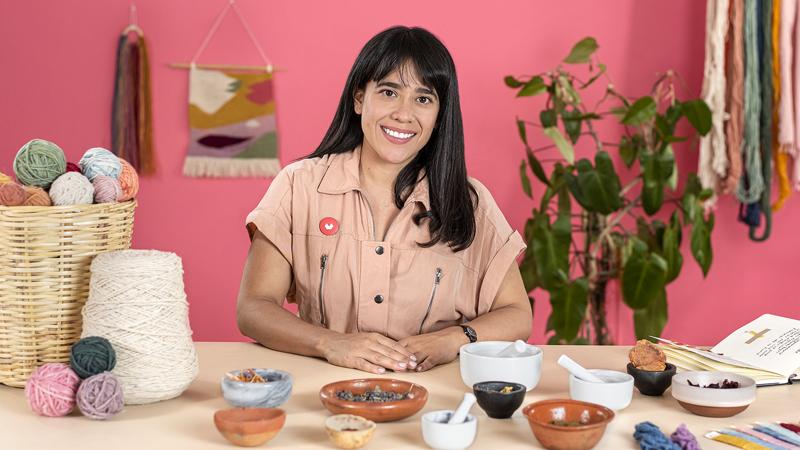Course overview
- Provider
- Domestika
- Course type
- Paid course
- Level
- Beginner
- Deadline
- Flexible
- Duration
- 1 hour
- Lessons
- 14 lessons
- Certificate
- Available on completion
- Course author
- Anabel Torres
-
Nature is an unparalleled color palette spanning the entire visible spectrum, from the greens of the trees to the blues of the sky. It is in nature that Mexican textile artist Anabel Torres finds her inspiration. In her search for sustainability, she discovered natural textile dyeing and it became the primary focus of her work, giving beautiful, natural colors to different products and sharing her technique by running workshops.
In this course, learn to dye fibers and fabrics with natural pigments, and then collect all your formulas and notes in a dyeing logbook—every textile artist's best friend!
Description
Start by getting to know Anabel, who tells you about her career in the world of textile dyeing and about her brand Anteis and the collaborations it has led to. She shares some of her main influences, from the use of color in traditional clothing to current artists experimenting with natural pigments.
Discover what a dyeing logbook is and how important a role it plays as a guide for any textile artist. Anabel explains how it works and the sections it includes.
Review the characteristics and classification of some pigments that can be found in nature, then study the natural fibers and tools to be used during the course.
To start your logbook, dye your skeins, first using vegetable pigments, then earth and clays, cochineal, and, finally, indigo. Anabel teaches you how to prepare the fibers for dyeing, separate the samples, and record the information of each of them and their pigments in your logbook.
Then learn to create variations of your basic pigments using a range of techniques. Start with re-dyeing, which consists of creating new colors by dyeing one color on top of another to create textures, patterns, and motifs.
Wrap things up by putting all the information obtained in your logbook and organizing your samples, so that you can consult it for all your textile projects.
Similar courses

-
Flexible deadline
-
14 hours
-
31 lessons

-
Flexible deadline
-
11 hours
-
43 lessons

-
Flexible deadline
-
10 hours
-
23 lessons

